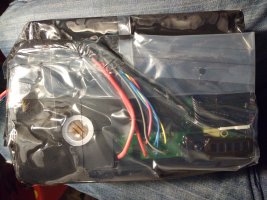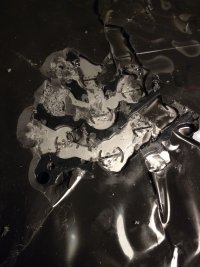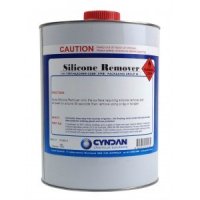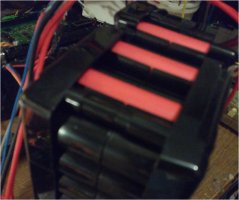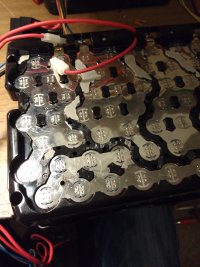Hey cheery
I feel your pain!!
First one i recieved like this had ncr18650pf cells in it. It was a pain.
Wrote about it in my build thread i think. Ended up using a dead cell to push out the live cell (after removing the plastic with snippers) using a hydraulic press. Cells in perfect condition, but wrappers are messed up. The cell holders were hexangonshaped and not round so rubber engulfed each cell from the sides too!
Then i got 6 more packs.
2x the red ones u have, no rubber. Spotwelds come off super easy, pack disassembled in like 20mins. Cells are only sanyo r1112 (2200mah)
4x the one u have with the ncr18650bd, (3200mAh).
So far taken apart two completely. Cells are perfect so i will take apart the others too.
The annoying thing with the rubber is that it seeps into and around the cells, atleast these are round holders so less gets down the sides of the cells.Its impossible to pull the pack apart even after removing screws and busbars (tried with the hydraulic press!)
Do the following (yes it takes a bit of time

)
Remove the bms
Use pliers to pull off the busbar nickel strip. These come off easily and you wont rip holes in the cells. Expose just enough of the busbar to grabit, u will pull off the silicone ontop of it with the busbar so you can save the effort there.
Use fine snippers where the blade is right at the edge, and cut off all those plastic parts that are holding the cells in at the positive and negative sides. Cut them off right where the cell is. Do this on both sides!
Remove the 4 screws holding the two halves of the cell holders together. On on each corner and in oposite directions, so two screws each side of pack.
Then the fun begins
I found best to use a 18650 spacer (the plastic cylinders u sometimes find in laptop batteries).
Place it on the positive end of one of the cells in the middle of the pack. Positive end because the wrappers more likely stay in takt, otherwise u will push the cell through and the wrapper will stay in the pack. Push against it with a lot of force! And i mean a lot. Some are looser then others, depending on how much of that solicone managed to creep down between holder and cell. start with the inner cells, they are easier to get out. Then work your way out.
You could also use a dead (really dead!!!!!) cell. But then ud need to push on the negative part of cells in the pack as to not short out the positive and negative when maybe squishing through the wrapper.
Outside cells are a pain. Scratch off as much silicone from everywhere as you can!
Then repeat from above.
When you reach about 10 cells left in the outer ring you can start trying to pry the holders apart.
GOOD LUCK! (You will need it

)
